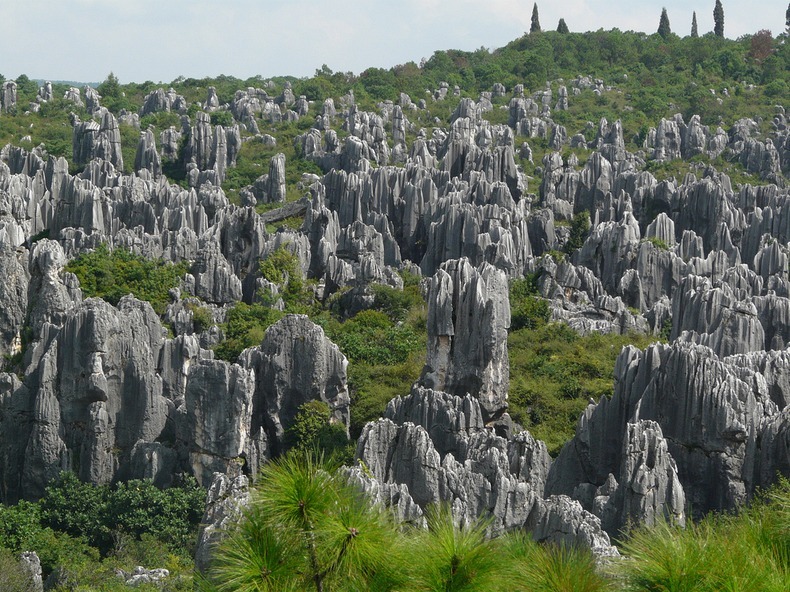Over 270 millions years, abusive geological processes, and erosion by water has carved the limestone into shapes that we see today. The resulting formations are generally known as karst - a German term for the region in Slovenia where the process was first investigated.

The stone forest forms part of the South China Karst region that extends over a surface of half a million square kilometers lying mainly in Yunnan, Guizhou and Guangxi provinces. It represents one of the world’s most spectacular examples of humid tropical to subtropical karst landscapes. The Shilin Stone Forest displays superlative karst features and landscapes seen nowhere else in the world, with a wider range of pinnacle shapes than other karst landscapes, and a higher diversity of shapes and changing colours. There are pinnacle-shaped, column-shaped, mushroom-shaped, and pagoda-shaped groups. Since almost all the typical pinnacle karst types can be identified in the Stone Forest, the park is acclaimed internationally the "Museum of Stone Forest karst".











Sources
